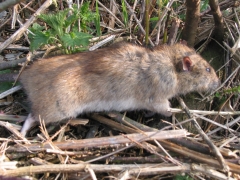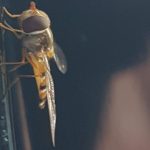Pest Information
This page has information about the pests we treat. If you cannot find the pest you are looking for please call me.
The video below is Ivy Bees sometime called Mining Bees, they arrive in time for when the Ivy is in blossom hence their name and are part of the solitary Bee family and they arev laying eggs in the ground then putting food in with the egg. They are not bothered with stinging people but can do it is really light if they do sting something similar to a nettle sting. I have never been stung and spend a lot of time in among these lovely Bees. There is no treatment required they will disperse later in the autumn.
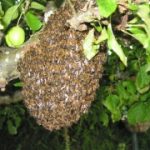
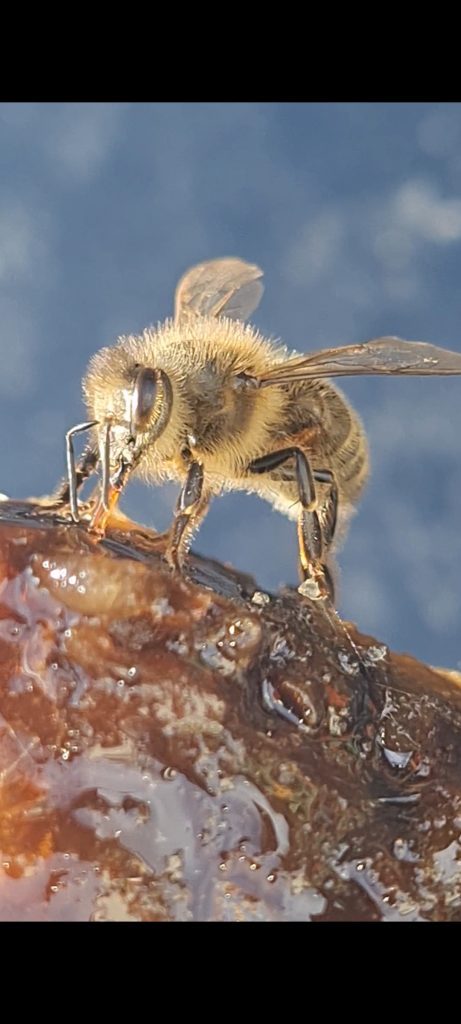
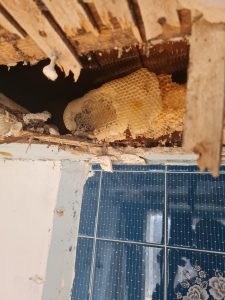
Bee Advice
There are many different types of Bees that you may have at your premises.
If they are Honey Bees and are easily accessible, the local Bee Association may well collect them from you. The link above will take you to the British Bee Keepers Association. If you need advice on identifying the type of Bees you have please call and we will do what we can to assist.
We do offer a call out service to advise on the Bees or Wasps at your premise, this charge is removed if we complete any works at the same time as the advice visit.
Many Bees will not be aggressive and will not sting and some are unable to sting, this will be covered when we call.
We do offer a Bee removal service from buildings. The work can become involved and can be very time consuming. Many pest controllers will offer and extermination service, this needs careful consideration as some practices with Bees is illegal and can cause serious problems for our Bees, that need all the assistance we can give to them surviving and the option of killing them with insecticide needs to be very carefully managed, controlled so as not to cause further problems to your property or wildlife and other Bee colonies. Any work completed will always be left with consideration to the environment and will also be left sealed so there is no possibility of a further infestation to that area and there will also be no bees suffering from insecticide contamination.
We will always consider all options of removal and relocation if at all possible.
Mining or Solitary Bees
You may have noticed Bees digging into the ground or along the facias of your roof it is more than likely a Mining bee. These solitary bees will cause no harm to the lawn or building, in normal cases as they are nesting in burrows in the ground or laying eggs and storing food for the young.
Autumn “Lawn Bees” See Below from the Bumble Bee Conservation trust
Ivy mining bee (Colletes hederae)
Ivy mining bees are relative newcomers to the UK, first spotted in 2001. They can be seen in autumn, coinciding with the flowering of Ivy, which, as their name suggests, is their main food resource. These bees are medium to large (just bigger than a honeybee), with ginger thoraxes and distinct orange/yellow striped abdomens.
Females
Females are slightly larger than a honeybee, with densely haired ginger thoraxes and broad orange/yellow striped abdomens. Their size and banding separates them from similar species in the same group (known as Plasterer bees).
Males
Males are similar to females, but smaller. They are difficult to distinguish from other male Plasterer bees though, particularly the Sea Aster bee (Colletes halophilus) and the Heather Colletes bee (Colletes succictus). The late flying period and association with Ivy flowers can help narrow things down though.
Habitat, nesting and flower preferences
Common in urban and farmland settings, as well as coastal and heathlands. This species is known to nest in exceptionally large and densely packed groups. These mainly occur on south-facing slopes of sparsely vegetated and bare earth/cliff faces, although are also known to occur in garden lawns and allotments. As the name suggests, this species predominantly feeds on Ivy flowers, but they will also visit a variety of late blooming flowers.
Flight season & Distribution
The last solitary bees of the year, males appear in late August, with females typically a month later, persisting into November. Having arrived in Dorset in 2001, these bees have spread throughout the south coast of England and have expanded northwards into south Wales and Shropshire in the West and Norfolk in the East.
Interesting fact
As soon as the females start to emerge the males take their opportunity and compete with each other to father the next generation. The contest is fierce with many males attempting to mate with the same female and becoming entangled in what is called a ‘mating ball’. With so many bees nesting in close proximity, the total effect of this frenzied activity can be quite impressive.
Social wasps and bees are controlled by a queen they do not live inside one nest. Instead, each mining bee female usually digs an individual burrow to rear her own young normally in soft lawns or mud banks. Mining bees are not aggressive and can be good for aeration of your garden.
These Bees rarely sting and even if provoked to do so they do not hurt like the Honey Bee or Wasp stings. They are recorded as 1.0 on the Schmidt Sting Pain Index.
They do pollenate flowers and vegetables so please leave alone if possible.
Mining Bees are normally formed in loose groups and but look after their own young unlike Honey Bees. They tend to live in communes and feed together and choose the same areas for their brood.
If you have young children it is best for them to wear shoes when in the area of concern, I can come and identify the Bees if you are concerned so please call me and make an appointment for me to call.
———————————————————————————————————————
Moles
Moles can ruin the look of your lawn or fields and are a hazard to animals who may trip on the shallow buried runs and suffer damage that can be very costly in vets bills. There are alleged to be in excess of 33 million Moles in Britain. Before the 2006 ban on strychnine the Moles would often have been poisoned, thankfully this has now stopped and although some companies use gas to kill the Moles we will only trap them in instant kill traps that are said to be the most humane way of dealing with Moles by many people who are concerned about some treatments being used.
There are various options available from suppliers that claim to rid your lawn or field of Moles but the only way to be sure is to trap and remove them from the ground so you are sure the job is done successfully.
———————————————————————————————————————
Fleas
The most common types of flea are cat fleas and dog fleas, so this section deals with these only. Human fleas are becoming increasingly rare.
Where do fleas come from?
Adult fleas live as parasites on warm-blooded mammals. Although there are fleas identified specifically as cat, dog or human fleas, these creatures are by no means found exclusively on these hosts. Cat fleas cause most infestations, probably because of the large number of domestic pets now kept, and you should pay particular attention to cleaning their bedding. Remember, if your cat has fleas, there could be as many as ten times that number in other parts of the house. Wall to wall carpeting, bedding and central heating in a home create ideal conditions in which flea larvae can develop.
Do fleas do any harm?
In the UK fleas are not often responsible for transmitting disease, however, dog fleas in particular, can transmit the dog tapeworm to humans.
How do I know if I have fleas in my home?
If you keep pets, no matter how careful you are, there is always the possibility that your animal will get fleas. If your pet starts scratching more than usual, or you find bites on your body (a tiny dark red spot, surrounded by a reddened area), which may be extremely itchy, most probably you will have a minor infestation.
How do I get rid of them?
You can treat minor infestations yourself, – suitable insecticides can be obtained from chemists, veterinary surgeries or some hardware or DIY stores, which can be used to treat bedding, carpets, curtains, sofas and chairs. Please follow the instructions given with the product. Remember, it is not simply a matter of cleaning your pet’s bedding thoroughly, although this is another important stage of the process. You can also buy a flea collar for your pet for use following treatment. A flea collar releases small amounts of insecticide onto the coat of your pet, and, although this will not kill all fleas immediately, it will certainly act as a repellent. A good vacuuming a week or so after treating soft furnishings will help to remove any remains of the fleas. You should wash and, if possible, tumble dry pet bedding. Remember, for your own safety to follow the manufacturers’ instructions on any insecticide packs.
Prevention rather than cure
As mentioned above, flea collars (and flea powders) for animals will act as a repellent to fleas, but regular washing and cleaning of pet’s bedding will help to prevent infestation. Regular vacuuming is another good preventative measure.
Treatment
Alert Pest Control normally use water based insecticides which we apply to floor areas and to some soft furnishings. We do suggest that the property is vacant during our treatment and certainly that any pets or children are out of the property and any fish tanks covered and pumps turned off. The property can be safely re-occupied under normal conditions 4 hours after treatment. We request that you do not vaccuum for 10-14 days after the treatment.
What about the bites on my skin?
If you are concerned about the bites, for instance if they become infected, you should contact your G.P. and ask their advice.
——————————————————————————————————————
Wasps
Wasps are commonly found throughout the UK and northern Europe. Like ants, (to which they are related) they are social creatures, and form colonies consisting of workers (infertile females), males and a queen. Hornets are part of the wasp family, and their life cycle is very much the same.
Where do they live?
Typically, wasps nests are found in earth banks, in buildings (roof spaces or cavities in walls), in trees or bushes. They build nests every year, with the colder months killing off workers and males. Only the young queens survive the winter to make a new nest the following spring. All nests are totally evacuated at the end of each year and never re-used.
Why are wasps such a nuisance to humans?
Why are Wasps all over my Willow Tree?
Willow trees have high concentrations of salicylates in their sap. It’s quite common to see wasps congregating around willow trees especially if they’ve been pruned recently. Wasps also use willows as mating ‘venues’.
Wasps don’t get ‘doped’ up on willow as such, they are just attracted by the smell which mimics one of the natural pheromones that they are attracted to.
Wasps cause a nuisance for various reasons. It is usually the late summer when the workers do not have to feed the larvae with high protein food, and they can indulge in sweet substances – fruit, jams, syrups etc. They enter kitchens in search of sweet food, and while not particularly hostile, they will sting if aggravated. As the cooler weather comes, the wasps become more irritable, and this is not helped by them feeding on over-ripe fruit, giving them the appearance of being “tipsy”. Again they are better left alone when in this condition. Earlier in the year the only nuisance caused by wasps is minor damage done to wooden fences, for example, and wooden fabric of buildings when the wood is needed to build nests.
Do wasps do any real harm?
Wasps do have a useful role scavenging for the larvae of other insects, controlling garden pests and clearing carcasses early in the season. They even dispose of rotten timber if available. However, they may carry disease picked up during their visits to dustbins, bottle banks and carcasses and can contaminate food if allowed to settle on it. A wasp sting is caused by the injection of poison into the victim, causing redness and swelling. In some cases more serious effects occur, and you should seek medical advice if this happens.
How do I get rid of them?
You can dispose of individual wasps using domestic insecticides, although this will not control or eliminate the colony itself. Ideally the whole nest and colony should be destroyed and we recommend that professional help is sought here as the risk to an untrained person dealing with a wasps nest can be significant. Call 01424 612068 for prompt wasp nest destruction.
———————————————————————————————————————
Rats
The Brown rat also known as the Norway, house, or sewer rat is dull brown in colour and measures between 12-1/2″ and 17″ (32 cm to 43 cm) from nose to tail. It has small, close-set ears, a blunt muzzle, and very sharp teeth.
Do rats cause damage?
Worldwide, rats are the most destructive pests known to man. Rats are a known source of numerous diseases afflicting humans and domesticated animals. Rats contaminate food and cause extensive damage to buildings and equipment in warehouses, granaries, restaurants, and bakeries anywhere food is handled or stored. Rats will gnaw through wood and enlarge masonry openings to gain entrance into buildings. In the construction of their nests, rats destroy all types of materials and can cause fires by chewing through insulation on electrical wires.
Are rats hazardous to humans?
Yes. Rats are a serious hazard to public health. Aside from contaminating food with their droppings and urine, fleas from rats were responsible for spreading the bubonic plague. Today, such diseases as salmonella bacteria (food poisoning), leptospira ( jaundice), and typhus are commonly spread by rats. Because of their unsanitary habits, secondary infections from rat bites can be serious and sometimes fatal. An infestation of rats must not be tolerated.
When are rats most common?
Rats are year-round pests. Under certain conditions, rats can survive outdoors during the winter, however activity and indoor migration increases as weather gets cooler and outdoor food and water sources decrease. Rats are widespread in the sewer system in the UK particularly in built up areas which still have victorian drainage systems.
When am I most likely to see rats?
Rats are most active during the evening and remain so until the middle of the night. If food and water are scarce, or in the case of large infestations, rats become active during daylight hours.
Where do rats build nests?
Rats nest in any safe location near food and water. Outdoors, rats burrow into the ground. Indoors, nesting occurs in double walls, between ceilings and floors, in closed-in areas around worktops, and anywhere rubbish is allowed to accumulate.
What are their breeding habits? Do rats multiply quickly?
The average life span of a rat is 18 months. Young are born about 22 days after mating and mature rapidly. Single females may have as many as 6 litters per year, averaging 6 to 14 young each. By 3 months of age, the young are independent and capable of reproduction. If not controlled, an infestation of rats will rapidly increase.
How can I tell if I have an infestation of rats?
Rat droppings near available food sources is the most common indication of an infestation. Evidence of gnawing, rub marks, tracks, burrows, nests, and damage to stored products are indications of the extent of an infestation.
What can l do to prevent an infestation of rats?
Rats will invade almost any premises, however it is the presence of unsanitary conditions that encourages their activity. All goods must be stored in properly sealed containers and waste should be prevented from accumulating, or kept in containers with tight-fitting lids. Seal all openings to the outside, including wood around doors and windows; repair masonry and seal openings for utility lines, conduits, and drains.
————————————————————————————————————
Mice
The house mouse is a small, slender rodent that has a slightly pointed nose; small, black, somewhat protruding eyes; large, sparsely haired ears; and a nearly hairless tail with scale rings. House mice are considered among the most troublesome and economically damaging rodents in Britain. Adult house mice weigh from 1/2 to 1 ounce. They are generally greyish brown with a grey or buff belly. The house mouse is very adaptable and often lives in close association with humans. Therefore it is known as a “commensal” rodent as are Brown rats. House mice are much more common in residences and commercial structures than are rats. Next to humans, it is regarded to be the most common mammal in cities.
Where do they live?
House mice live in and around homes, farms, commercial establishments, and in open fields and agricultural lands. At times they may be found living far from human settlements, particularly where climates are moderate. House mice eat many types of food but prefer seeds and grain. They are not hesitant to eat new foods and are considered “nibblers,” sampling many kinds of items that may exist in their environment. Foods high in fat, protein, or sugar may be preferred even when grain and seed are present. Such items include bacon, sweets, and butter. Unlike brown rats, house mice can survive with little or no free water obtaining their water from the food they eat. House mice are mainly nocturnal, although in some areas a lot of daytime activity may be seen. Seeing mice during the day does not necessarily mean that a high population is present, although this is usually true for rats. They may nest in the ground or in any protected location. Nests are constructed of shredded fibrous materials such as paper, or other similar items, and generally have the appearance of a “ball” of material loosely woven together. Nests are usually 4 to 6 inches in diameter. Litters of 5 or 6 young are born 19 to 21 days after mating, although females that conceive while still nursing may have a slightly longer gestation period. Mice are born hairless and with their eyes closed. They grow rapidly, and after 2 weeks their eyes and ears open and they are covered with hair. They begin to make short excursions from the nest and eat solid food at 3 weeks. Weaning soon follows, and mice are sexually mature at 6 to 10 weeks of age.
Why are there so many?
Mice may breed year-round. The female has 5 to 10 litters per year. Mouse populations can therefore grow rapidly under good conditions. Studies indicate that during its daily activities, a mouse normally travels an area averaging 10 to 30 feet in diameter. Mice seldom travel farther than this to obtain food or water. Because of their limited movement and feeding behaviour they are much more difficult to control in some situations.
Do they do any harm?
When house mice live in or around structures, they almost always cause some degree of economic damage. In homes and commercial buildings, they may feed on various stored food items or pet foods. In addition, they usually contaminate foodstuffs with their urine, droppings, and hair. A single mouse eats only about 8 pounds of food per year but destroys considerably more food than it consumes because of its habit of nibbling on many foods and discarding partially eaten items.
House mice cause damage to buildings by their gnawing and nest-building activities. House mice often make homes in large electrical appliances, and here they may chew up wiring as well as insulation, resulting in short circuits which create fire hazards or expensive damage. Mice may also damage stored items in attics, basements, garages, or museums. Damaged family heirlooms, paintings, books, documents, and other such items may be impossible to replace. Among the diseases mice or their parasites may transmit to humans are salmonellosis (food poisoning), rickett-sialpox, and lymphocytic choriomeningitis. Mice may also carry leptospirosis, ratbite fever, tapeworms, and organisms that can cause ringworm (a fungal skin disease) in humans.
———————————————————————————————————————
